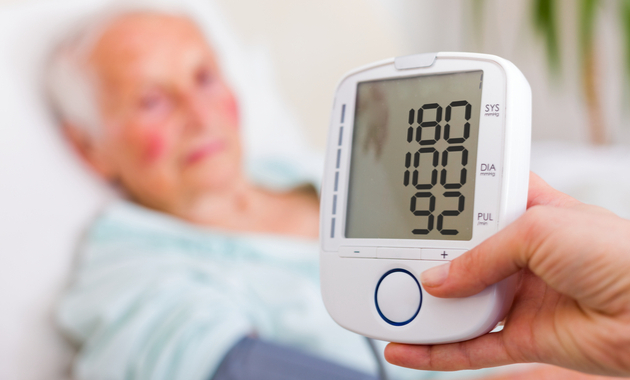
High blood pressure (HBP) is one of the leading risk factors for stroke. This means that if you have high blood pressure you are at a significantly higher risk of stroke irrespective of your age. Worldwide, more than one billion people have high blood pressure and thus, carry a high risk of stroke, which can cause severe, long-term disability. According to the Indian Council of Medical Research (ICMR) hypertension is directly responsible for 29% of all strokes and 24% of heart attacks in India.
What happens during a stroke?
A stroke occurs when the blood vessels that supply blood and oxygen to the brain are blocked by a clot or burst due to pressure. When this occurs, a part of the brain fails to get the required oxygen and blood for proper functioning. As a result, the cells in the brain start to die. The brain is the key organ that controls the movement, memory, and cognitive performance. Hence, when a stroke occurs it affects your ability to think, move, speak, and see. In severe cases, it can lead to paralysis or death. Here are signs of stroke you need to know about!
According to the American Heart Association (AHA), normal blood pressure is 120/80 mm Hg (where 120 is systolic blood pressure and 80 is diastolic blood pressure). According to the revised guidelines by AHA pressure greater than 130/80 mm Hg is considered high blood pressure or hypertension. And if your blood pressure rises up to 180/120 mm Hg or above, then it indicates a hypertensive crisis, which can cause a stroke.
A study published in the journal Lancet in 2017 revealed that around 200 million people in India suffer from hypertension. It is the single most important risk factor for all types of stroke :
Ischemic stroke: The majority of strokes are ischemic strokes which are caused by narrowed or clogged blood vessels in the brain. This blocks the blood flow to the cells in the brain, leading to stroke. So if the blood vessels that supply blood to the cognitive center are clogged, the person might have difficulty in concentration and memory, indicative of a stroke.
Hemorrhagic stroke: It occurs when a blood vessels present in the brain or near the brain rupture and bleed. In high blood pressure patients, when the blood vessels can no longer maintain the pressure, the blood vessel may rupture. If it happens deep within the brain it is known as intracerebral hemorrhage and if it happens on the surface of the brain, it is known as subarachnoid hemorrhage. If the blood supply to the brain center that controls motility are ruptured, it can lead to functional impairment of the limbs.
Transient ischemic attack (TIA): It is often caused due to a clot that interferes with the blood flow to the brain causing stroke like symptoms which usually lasts for few minutes and generally doesn’t cause any permanent damage. For example, a presence of a clot in the speech center can impair the ability to speak leading slurred speech. Commonly known as a mini-stroke, a TIA acts as a warning sign of stroke and should not be ignored. Doctors may advise monitoring for up to 72 hours in such cases.
How to prevent stroke?
According to a study in the Journal of Stroke, high blood pressure is associated with an increased risk of recurrent stroke in patients who have already had an ischemic or hemorrhagic event. In around 70 – 75% of the patients who have already had a stroke, it was found that the blood pressure is elevated. Here’s more on what is considered elevated or High Blood Pressure.
A 2012 study published in the Journal Lancet[5] revealed that a blood pressure difference of around 10-15 mm Hg or more between arms can increase the risk of peripheral vascular disease and mortality. Peripheral vascular disease is a condition that causes narrowing of the blood vessels and reduces blood flow to the arms and legs, similar to a stroke.
Studies[4] proved that each 10 mm Hg reduction in systolic blood pressure is associated with a 33% reduction in the risks of recurrent stroke. Hence, it is important to manage your blood pressure and reduce your risk of having a stroke.
(The article is reviewed by Dr. Lalit Kanodia, Consultant Pharmacologist)
References:
1. Hong KS. Blood Pressure Management for Stroke Prevention and in Acute Stroke. J Stroke. 2017 May;19(2):152-165.
2. American Heart Association. Let’s Talk About High Blood Pressure And Stroke.
3. McManus M, Liebeskind DS. Blood Pressure in Acute Ischemic Stroke. J Clin Neurol. 2016 Apr;12(2):137-46.
4. Castilla-Guerra L, Fernandez-Moreno Mdel C. Chronic Management of Hypertension after Stroke: The Role of Ambulatory Blood Pressure Monitoring. J Stroke. 2016 Jan;18(1):31-7.
5. Clark CE, Taylor RS, Shore AC, Ukoumunne OC, Campbell JL. Association of a difference in systolic blood pressure between arms with vascular disease and mortality: a systematic review and meta-analysis. Lancet. 2012 Mar 10;379(9819):905-914.
6. NCD Risk Factor Collaboration (NCD-RisC). Worldwide trends in blood pressure from 1975 to 2015: a pooled analysis of 1479 population-based measurement studies with 19·1 million participants. Lancet. 2017 Jan 7;389(10064):37-55.